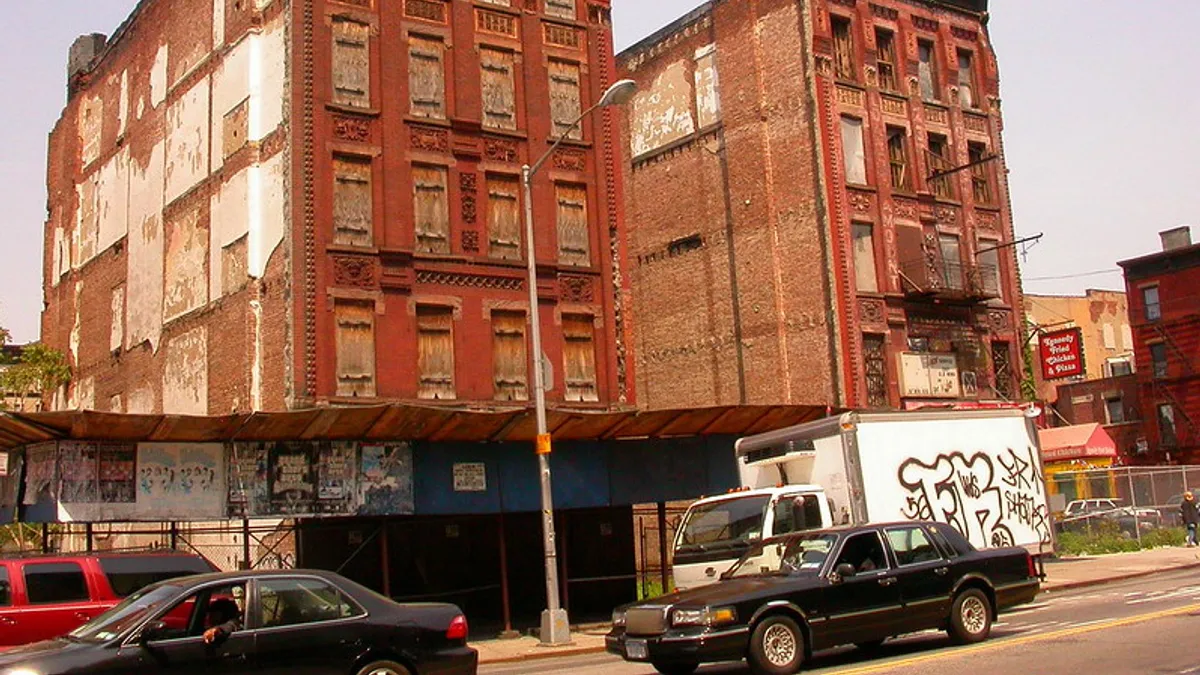Dive Brief:
- In a recent study, researchers at Ohio State University analyzed data from Columbus, OH's 311 system — a platform for residents to report non-emergency issues to the city — and discovered certain non-drug-related service requests correlate to hotspots for opioid use and overdoses.
- The researchers found 10 of the 21 classifications of 311 requests consistently correlated with opioid and overdose hotspots: code violations; street lighting; public health violations such as pests; water/sewer; animal complaints; abandoned vehicles and trash/litter.
- The research supports the idea that the rate of opioid overdoses is higher in neighborhoods with greater socioeconomic stresses, such as poverty, deprivation and isolation. "This is not just a correlational study. We're also driven by this theory that opioid use disorder is rooted in social and economic distress, and we're trying to find other ways to measure that in a more dynamic way," said Harvey Miller, the study's senior author and director of the Center for Urban and Regional Analysis.
Dive Insight:
Data digitization has brought a slew of information to city workers' fingertips. The hard part is not just identifying the best source of data, but then extracting relevant information and finding the best ways to use it.
Many cities rely on census data to influence issue responses, such as for opioid overdoses. But that data isn't released frequently, which is a problem when dealing with dynamic issues such as opioid use or poverty. Data from 311 is frequently updated, sometimes daily, which can provide an accurate and up-to-date look at conditions and allows for a more tailored, and potentially more effective, response.
This study shows that previously untapped or underutilized data sources hold promise for creating solutions to cities' pressing challenges. Looking at neighborhood-level data instead of just individual citizen data for opioid use disorder could provide deeper insight into the complex problem. That could guide policy decisions about how to equitably distribute resources to citizens in the most need.
"There are other forms of found data, or data exhaust, that have been thrown off as part of normal processes of daily life or a city operating. I think if we use this data carefully, we can recognize things that were missing in our traditional data sources," Miller said.
311 data increasingly is viewed as a valuable asset because of the organic way it is gathered and the low likelihood of false reports. Citizens directly and efficiently communicate with a city via phone, email or app to express specific community needs. The city does not have to perform outreach or do guesswork about which issues are most important to residents.
The 10 classifications of predictor 311 requests do not necessarily show causation for opioid use disorder and overdoses, they simply show a correlation and suggest a tie to socioeconomic disparities. The researchers do not consider their 311 analysis method to be a predictive tool for policing. Rather, they view it as a way for cities to gain more insight into the opioid crisis and to help with strategic resource planning and community outreach.
Using 311 requests or other alternative datasets can be performed anywhere and does not exclusively pertain to Columbus, Miller said. However, a major barrier is that cities do not have consistent 311 request classifications, or taxonomies, and over time they sometimes change how they classify requests.
"This method could be applied anywhere. ... But I think the results may differ in different cities because their classification systems are different," Miller said. "One implication of our research is we need either a national consistent classification system for 311 data, or at least a way to be able to map these different definitions among communities so we can make comparisons."












